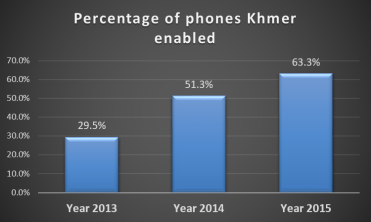
While many Cambodian folk tales feature Judge Rabbit as the smart wise-guy, other tales portray the rabbit as a nervous, less intelligent animal. In this story, rabbit’s nervousness leads to mass hysteria and an encounter with a creature I never expected in Cambodian folklore: the lordly Lion. I don’t know how this creature from Africa ever popped up in Cambodian folklore, but I guess these tales travelled at some stage along the silk road a thousand years ago.
The other thing that fascinates me about this story is the reference to an earthquake. There have not been many earthquakes in Cambodia, yet everyone knows they can be frightening.
This is my retelling of the story.
THE NERVOUS RABBIT AND THE PALM FRUIT
A nervous rabbit lived under a palm tree near a forest. Like most rabbits he was always listening out for danger.
On this hot afternoon he was sound asleep, when a ripe palm fruit fell down on the ground nearby. The crackling sound as the palm fruit fell on the dried palm leaves woke the rabbit with a start!
 Alarmed, the nervous rabbit jumped up: “It’s an earthquake!” Without looking behind he began running. There was no time for a backward glance, he had to escape the danger!
Alarmed, the nervous rabbit jumped up: “It’s an earthquake!” Without looking behind he began running. There was no time for a backward glance, he had to escape the danger!
The herd of oxen saw him running past at high speed and, chewing on grass, one of them called out: “Rabbit! Why are you running so fast? What’s the matter?” Even the oxen were feeling jumpy now, after all, the rabbit looked totally frightened.
The Rabbit shouted in haste “Brother Oxen! It’s an earthquake! There’s no time to chew! Run for your lives!”
The Oxen began to run too. An earthquake? This could be dangerous!
The oxen and the rabbit soon met the Pigs and Deer. Startled, they too began running, joining the Oxen and the Rabbit. The Pigs heaved themselves forward and put on a burst of speed. No earthquake was going to catch these fat pigs!
When the Elephants saw them running, they too, asked “Why are you running? What is the matter?”
The Oxen told them “Haven’t you heard? The earthquake is coming!” Hearing this story, the Elephants joined them. When they all reached the Lion’s den, the clever Lion, seeing all the panic-stricken animals, stretched his paws and casually asked the Elephants, “What’s up? Why are you running?”
The Elephants were out of breath. “We don’t exactly know for sure. We saw the Oxen running. We heard something about an earthquake.”
So the Lion, lazily shook his mane and asked the Oxen, “Did you guys actually feel the earthquake?”
The Oxen confessed, “Well not directly, no. We saw the Rabbit running, so we ran after him. He looked very frightened.”
The Lion asked the Deer and the Pigs, and they answered likewise.
“Hmmmn,” said the Lion. And he turned to face the Rabbit. “This earthquake. Just how serious was it?” All the animals looked at the rabbit. They waited for his reply.
“I’m not too sure, myself. While I was sound asleep under a palm tree, I heard the sound of the earth breaking up. It was a sharp crackling sound. I was afraid and began to run.”
“So you heard something but didn’t actually feel anything?” asked the Lion. “You didn’t feel the ground move beneath you?”
“No,” admitted the rabbit. “But the sound I heard; it was pretty terrifying.”
Arching his back and standing up, the Lion spoke: “All of you, come with me.” And slowly, swinging his tail, he led all the panicky animals to Rabbit’s palm tree. He showed them the cracked palm fruit lying on the ground. “There’s your earthquake,” said the Lion.
The embarrassed animals gave the Rabbit a sound rebuke and slowly went back to their own places.









 Alarmed, the nervous rabbit jumped up: “It’s an earthquake!” Without looking behind he began running. There was no time for a backward glance, he had to escape the danger!
Alarmed, the nervous rabbit jumped up: “It’s an earthquake!” Without looking behind he began running. There was no time for a backward glance, he had to escape the danger!
You must be logged in to post a comment.